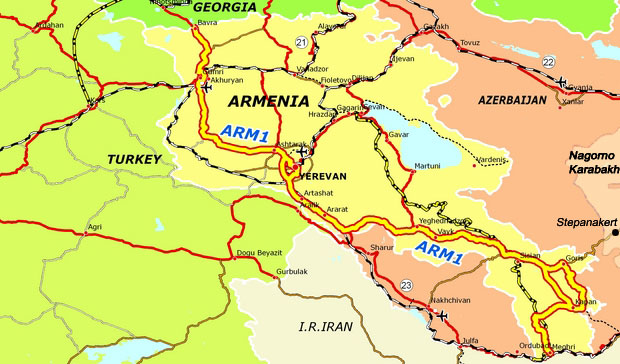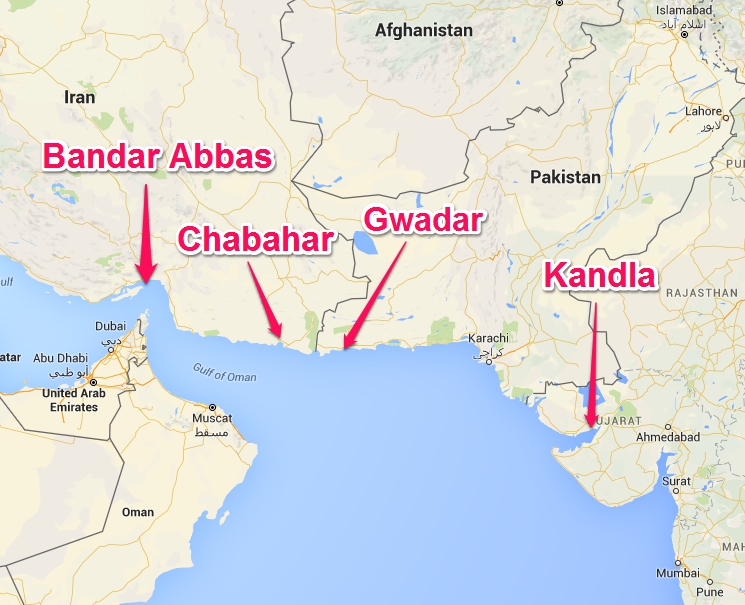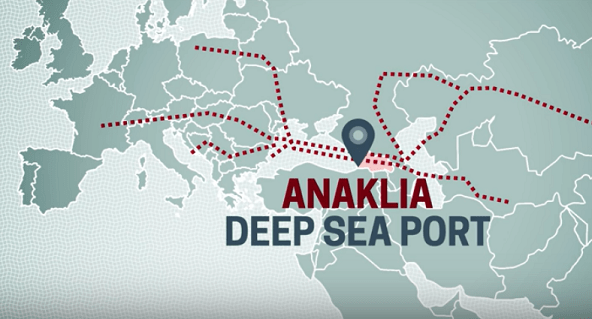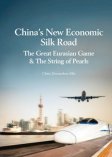Armenia’s North-South Highway Linking Europe with Iran, Dubai, and India

Last week, I discussed how China and Turkey were developing the latter’s “Middle Corridor” to allow high speed rail access from Kazakhstan, to Baku and then across Azerbaijan, Georgia and Turkey – the so-called BTK (Baku/Tbilisi/Kars) route. In doing so, I pointed out how regional tensions had left Armenia largely out of the picture, as the country has disagreements with both Azerbaijan to the north, leaving it unable to connect meaningfully with Baku, and with Turkey to the south. In fact, the BTK Route avoids Armenia altogether.
What I didn’t mention, however – and it was erroneous of me to omit this – is that Armenia is very much part of China’s Belt & Road Initiative and has its own, significant infrastructure investments to link up to the region. It is hard to keep abreast of everything – but many thanks to my many Armenian friends for pointing out this omission and writing to me. In fact, Armenia’s North-South Highway is a major infrastructure project aimed at at connecting the Southern border of the country with its Northern point by means of 556 km-long Meghri-Yerevan-Bavra highway. The construction of this highly important strategic road will permit easier and higher volumes of traffic from the southern border of Armenia to the Georgian border and up to Black Sea ports and allows passenger and cargo transportation in accordance with European Union standards.

The project has a price tag of some US$1.5 billion, and financing is being provided by the Asian Development Bank (ADB), European Investment Bank (EIB) and Eurasian Development Bank (EDB). I highlighted these institutions in the article “Who Is Financing The New Economic Silk Road?”
Concerning the logistics impact of the Highway, Simon Appleby, involved in the Agricultural Industry in Georgia and Armenia through the YFN Group tells me “Armenia is a One Belt One Road beneficiary country, with Chinese energy firms making almost daily pitches at solar and HPP projects to displace the elderly nuclear power plant. The ADB-funded Armenian North-South Highway project will allow container trucks to travel from Georgia’s Black Sea port cities to the Iranian frontier in 14 hours; part of this is being built by OBOR-backed Chinese engineering firms. Armenian fruit producers are now capable of dispatching a container of apricots in the Ararat Valley Monday morning and unloading them in Dubai Port (via Iran’s Bandar Abbas Port) before close of business Friday, taking 10-14 days off the shipping time via Georgia, and OBOR-backed Chinese firms are helping with the infrastructure. There are a lot of interesting Belt and Road projects in Armenia in energy, agriculture, and IT likely to kick off in the next year.”
Iran is already a major part of China’s Belt & Road and has been investing, together with India, in the International North-South Transport Corridor (INSTC), which includes the Iranian-Indian invested port at Chabahar and then runs north to Baku. That bypasses Armenia, but the Armenian highway runs close to Chabahar at Bandar Abbas. In fact, the southern coast there is becoming very well serviced for Port facilities. China has placed huge investment into Pakistan’s Gwaidor Port while India itself has been actively developing Kandla. The distance from Chabahar to Bandar Abbas is just 357 nautical miles, while the two Ports are also connected by air. That gives Armenia access to consumer markets in Iran, Dubai and India, and vice-versa.

To the north of Armenia’s North-South Highway lies Georgia, where it crosses into the country at Bavra. From there it is a 7 hour drive north-west to Georgia’s main Black Sea Port of Batumi. However, Georgia is also constructing a massive deep water Port further up the coast, at Anaklia. As Georgian Prime Minister Giorgi Kvirikashvili stated at the end of last year while laying the foundation stones, “This is where Europe meets Asia, and that is what matters most. This place today lays the foundation of a new Georgia.”
Bruno Balvanera, a director of the European Bank for Reconstruction and Development, one of this US$2.5billion project backers, has stated “Anaklia port is very important for Georgia as it will position the route via the Caucasus on the radar of China and Europe. It will attract the further interest of foreign investors to develop a value chain route. It will consolidate Georgia as the logistics centre for the Caucasus. It will also consolidate its ties with both Europe and China as well as its immediate neighbours. All in all, it’s a very strategic project that can be a game changer in the medium term.”

“The Anaklia Deep Sea Port will receive its first vessels by 2021 and will fully change the transportation and logistics landscape in Georgia by offering state of the art, reliable infrastructure and competitive costs,” said Ketevan Bochorishvili, CEO at Anaklia City and a former deputy minister of economy. “Complemented by the US$3.5 billion to be spent by the government to upgrade the country’s road and rail infrastructure, Anaklia port will become a key transportation node between western Europe, the Caucasus, Central Asia and north-western Iran.”
Clearly, Armenia’s North-South Highway links with both the upcoming Georgian road infrastructure as well as that to Iran. By doing so it provides a link between the EU, the Middle East, and India. Opportunities exist not just in the tenders for building the Armenian and Georgian infrastructure, but also within industries extant within the countries themselves – with agricultural development, upgrading and exports in this blessed and fertile part of the world a key industry to be involved with.
About Us
Silk Road Briefing is produced by Dezan Shira & Associates. The firm provides risk assessment, business intelligence and professional services throughout Eurasia, and maintains a Belt & Road desk. Please contact us at silkroad@dezshira.com or visit us at www.dezshira.com
 Related Reading:
Related Reading:
![]() Iran Completes First Phase of Chabahar Port and International North-South Transport Corridor
Iran Completes First Phase of Chabahar Port and International North-South Transport Corridor
![]() Turkeys Pivotal Role in China’s Belt and Road Initiative with Europe, Central Asia, and the Middle East
Turkeys Pivotal Role in China’s Belt and Road Initiative with Europe, Central Asia, and the Middle East
![]() China Funded Lapis-Lazuli Transport Corridor Unites Caucasus and Central Asia
China Funded Lapis-Lazuli Transport Corridor Unites Caucasus and Central Asia
China’s New Economic Silk Road
This unique and currently only available study into the proposed Silk Road Economic Belt examines the institutional, financial and infrastructure projects that are currently underway and in the planning stage across the entire region. Covering over 60 countries, this book explores the regional reforms, potential problems, opportunities and longer term impact that the Silk Road will have upon Asia, Africa, the Middle East, Europe and the United States.






